At the Magaziner Center for Wellness, we have more than 33 years experience in helping people with their joint pain and with the challenges they may face because of low hormone levels. As we help our patients with a holistic, whole body approach, non-surgical approach, we find that many patients have many issues or comorbidities that prevents them from living a pain-free, energetic lifestyle. Two challenges that are often found together are low hormone levels and joint pain, especially in women.
Low hormone levels and joint pain are complex issues on their own. When a patient comes into our office for a complaint of knee pain or hip pain, it is usually not a complaint that has suddenly come upon them. It is usually a complaint that has followed them for years through a morass of ineffective treatments including pain medications, and, a constant reminder at the orthopedist’s office that a hip or knee replacement is a future and seemingly unavoidable destiny.
As we will demonstrate below, joint pain can be a symptom of menopause. Estrogen has been shown to protect joints from inflammation damage. When estrogen levels are reduced, the hormone’s anti-inflammatory effect can be reduced as well.
Some doctors doubt the connection between low estrogen and joint pain
Many research studies rely on the theme of “fact or fiction” in describing many of the problems menopausal and post-menopausal women face with the many conditions that challenge them daily, joint pain being one. One study titled: “Menopausal arthralgia (joint pain): Fact or fiction” (1) follows this theme.
“Arthralgia (joint pain) is experienced by more then half of the women around the time of menopause. The causes of joint pain in postmenopausal women can be difficult to determine as the period of menopause coincides with rising incidence of chronic rheumatic conditions such as osteoarthritis. Nevertheless, prevalence of arthralgia does appear to increase in women with menopausal transition and is thought to result from reduction in estrogen levels. Similar syndrome occurs following sudden withdrawal of hormone replacement therapy or treatment with aromatase inhibitors (medications used to stop estrogen production in breast cancer sufferers). Various interactions between sex hormones and pain processing pathways, immune cells and chondrocytes (cartilage building cells, when you have less of these you develop “bone on bone) have been demonstrated but undoubtedly require further research. Whilst, at present, no specific treatment exists for menopausal arthralgia, a number of conservative measures may be effective. Hormone replacement therapy (HRT) has been shown to have some benefit in alleviating arthralgia associated with menopausal transition, and can be considered in women who report distressing vasomotor (night sweats, hot flashes, and flushes) symptoms. Simple analgesia, weight loss and physical exercise should be encouraged particularly in women with underlying osteoarthritis. Finally, other factors commonly associated with chronic pain and menopausal transition such as fatigue, poor sleep, sexual dysfunction and depression need to be addressed.”
This sounds more of fact than fiction.
“The greatest increases in long-term opioid use and opioid-related overdose mortality in recent years have been among women in midlife.”
While that research was published in 2010, look at how little has changed. In fact more challenges arose when the common treatment of these postmenopausal women with joint pain was to simply prescribe opioids. Here is a 2019 study’s findings (2) : “The greatest increases in long-term opioid use and opioid-related overdose mortality in recent years have been among women in midlife. Common menopausal symptoms broadly affect health and health care utilization in midlife, but their contribution to chronic pain management during this period is unknown.”
Estrogen supplementation helps with joint pain
There are a number of new studies out seeking to confirm or shed light on potential benefits estrogen supplementation may have on joint pain.
Estradiol can help prevent chronic inflammation and the development of bone spurs
A May 2020 study (3) suggests that 17β-estradiol, or more commonly E2 Estradiol can help prevent chronic inflammation and the development of bone spurs. The researchers concluded this study by suggesting “(Our) Results indicate a potential protective role for estrogen against the development of osteoarthritis.”
Estradiol can protect articular cartilage from damage during osteoarthritis development
Similar findings were published in July 2019 in the journal Annals of translational medicine.(4) Here researchers suggested that E2 Estradiol can protect articular cartilage from damage during osteoarthritis development by promoting chondrocyte autophagy (cleaning up damaged cells to make way for new cell generation).
Estrogen supplementation results in a modest but sustained reduction in the frequency of joint pain
In the November 2018 issue of the medical journal Menopause, (5) investigators lead by the Los Angeles Biomedical Research Institute at Harbor-UCLA Medical Center and the University of Iowa examined whether or not estrogen supplementation could help with the problems of chronic joint pain. This research was inspired to address mixed or conflicting earlier studies which could not definitely suggest estrogen supplementation provided benefit.
Side note: In this study, horse or equine estrogens are compared to placebo. In our office we do not use horse estrogen, we use bio-identical hormones which will be touched on below.
In this study, 10,739 postmenopausal women who have had a hysterectomy were randomized to receive daily oral conjugated equine estrogens or a matching placebo. The frequency and severity of joint pain and joint swelling were then monitored.
At baseline, joint pain and joint swelling were closely comparable in the randomization groups (about 77% with joint pain and 40% with joint swelling).
After 1 year, joint pain frequency was significantly lower in the estrogen-alone group compared with the placebo group, as was joint pain severity, and the difference in pain between randomization groups persisted through year three.
However, joint swelling frequency was higher in the estrogen-alone group.
Conclusion: The current findings suggest that estrogen-alone use in postmenopausal women results in a modest but sustained reduction in the frequency of joint pain.
A connection: What we are pointing out here is that the basis of our joint pain program surrounds the use of regenerative medicine therapies and their impact on the inflammatory healing response. The body needs inflammation and swelling to heal. In this study, estrogen helped with pain, but it left the swelling alone. This is a clue that estrogen maybe trying to help heal the joint? But what about finding in a study published in the journal Osteoarthritis and Cartilage that suggested that women with low serum levels of estradiol, progesterone and testosterone had increased knee swelling and possibly other osteoarthritis-related joint degeneration. The lack of the estrogen (E2) estradiol was seen as a cause of swelling. (6).
Low estrogen can lead to bone on bone in hips in knees
In one research paper, investigators published findings in the journal Ultrasound in medicine and biology suggesting there is little question that estrogen deficiency can accelerate a bone on bone condition.(7)
In this animal study, the researchers looked at rapid, spontaneous degeneration of cartilage in the joints of female rats who had their ovaries removed and, as such, the impact of the resulting low-estrogen levels.
At three weeks after ovary removal, the articular cartilage in the female rat’s knees lost significant thickness.
The researchers concluded that estrogen depletion induces cartilage loss and joint deterioration in the hip and knee pretty rapidly.
This same team of researchers did not stop there. In a later they expanded their work to include what is happening to the bone in these animal joints. In the journal BioMed research international, (8) they published results that suggested that estrogen deficiency causes significant cartilage breakdown but not significant bone breakdown in the early stages of estrogen deficiency induced osteoarthritis.
What this means is that early treatment that enhances and repairs the cartilage will protect joints from bone spurs. As we know, many women go to joint replacement because of overgrowth of bone in the joints, bone spurs.
Treatment
What we have pointed out in this article is that:
There is a connection between low estrogen levels and joint pain in postmenopausal women.
In many patients we see, there has been a long history of joint problems that have become progressively worse at a more accelerated level after menopause.
A holistic approach to healing may be suggested to patients with difficult to treat joint pain who exhibit other and numerous health concerns, including low hormone levels.
A brief note on bio-identical hormones (BHRT)
At the Magaziner Center for Wellness, we offer bio-identical hormones (BHRT). Bio-identical hormones are different than synthetic hormones because they are structurally and chemically similar to the three estrogens naturally produced by the body – Estriol, Estradiol and Estrone
The body responds to and metabolizes synthetic hormones differently than bio-identical hormones. Bio-identical hormones are considered by many to be far safer and more effective than synthetics and, therefore, have grown in use.
If you would like to explore your joint pain and it possible relationship to low hormone levels, please contact our office so we can start a conversation with you.
Related articles
Menopause Hormone Therapy May Prevent Bone Loss
Joint Replacement Loosening Problems – Is it a Hormone Problem?
The Importance of Weight Loss in Avoiding Knee Replacement
Why Do Women Have Knee Replacement Complications?
Why Are Post-Menopausal Women Prone to Falls?
References
1 Magliano M. Menopausal arthralgia: Fact or fiction. Maturitas. 2010 Sep 1;67(1):29-33.
2 Gibson CJ, Li Y, Huang AJ, Rife T, Seal KH. Menopausal symptoms and higher risk opioid prescribing in a national sample of women veterans with chronic pain. Journal of general internal medicine. 2019 Oct;34(10):2159-66.
3 Ganova P, Zhivkova R, Kolarov A, Ivanovska N. Influence of estradiol treatment on bone marrow cell differentiation in collagenase-induced arthritis. Inflammation Research. 2020 Mar 21:1-1.
4 Ge Y, Zhou S, Li Y, Wang Z, Chen S, Xia T, Shen J, Teng H, Jiang Q. Estrogen prevents articular cartilage destruction in a mouse model of AMPK deficiency via ERK-mTOR pathway. Ann Transl Med. 2019 Jul;7(14):336. doi: 10.21037/atm.2019.06.77. PMID: 31475206; PMCID: PMC6694256.
5 Chlebowski RT, Cirillo DJ, Eaton CB, Stefanick ML, Pettinger M, Carbone LD, Johnson KC, Simon MS, Woods NF, Wactawski-Wende J. Estrogen alone and joint symptoms in the Women’s Health Initiative randomized trial. Menopause. 2018 Nov;25(11):1313-1320.
6 Jin X, Wang BH, Wang X, Antony B, Zhu Z, Han W, Cicuttini F, Wluka AE, Winzenberg T, Blizzard L, Jones G. Associations between endogenous sex hormones and MRI structural changes in patients with symptomatic knee osteoarthritis. Osteoarthritis and Cartilage. 2017 Feb 2
7 Wang Q, Liu Z, Wang Y, Pan Q, Feng Q, Huang Q, Chen W. Quantitative Ultrasound Assessment of Cartilage Degeneration in Ovariectomized Rats with Low Estrogen Levels. Ultrasound Med Biol. 2016 Jan;42(1):290-8. doi: 10.1016/j.ultrasmedbio.2015.
8 Wang Y, Liu Z, Wang Q, Feng Q, Chen W. Early Detection of Tibial Cartilage Degradation and Cancellous Bone Loss in an Ovariectomized Rat Model. Biomed Res Int. 2017;2017:9654056.




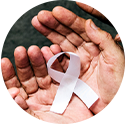


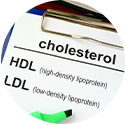







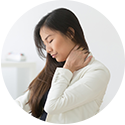











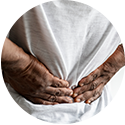



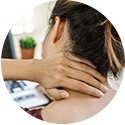




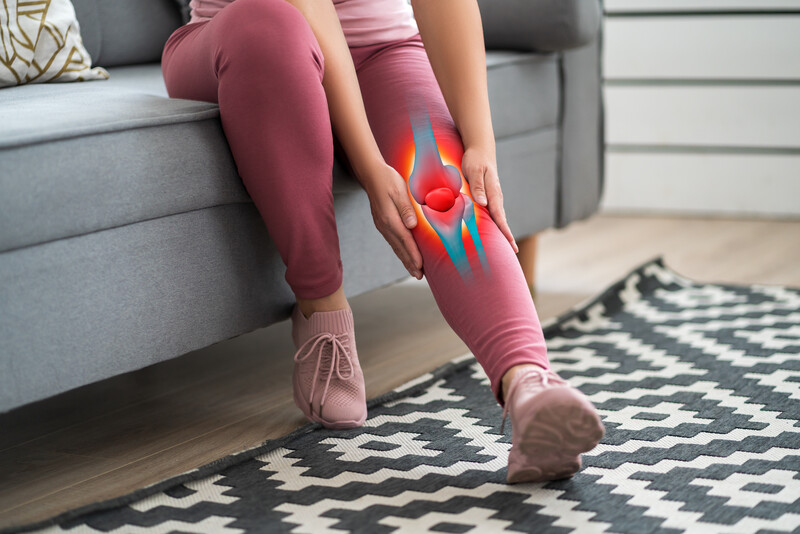
Recent Comments